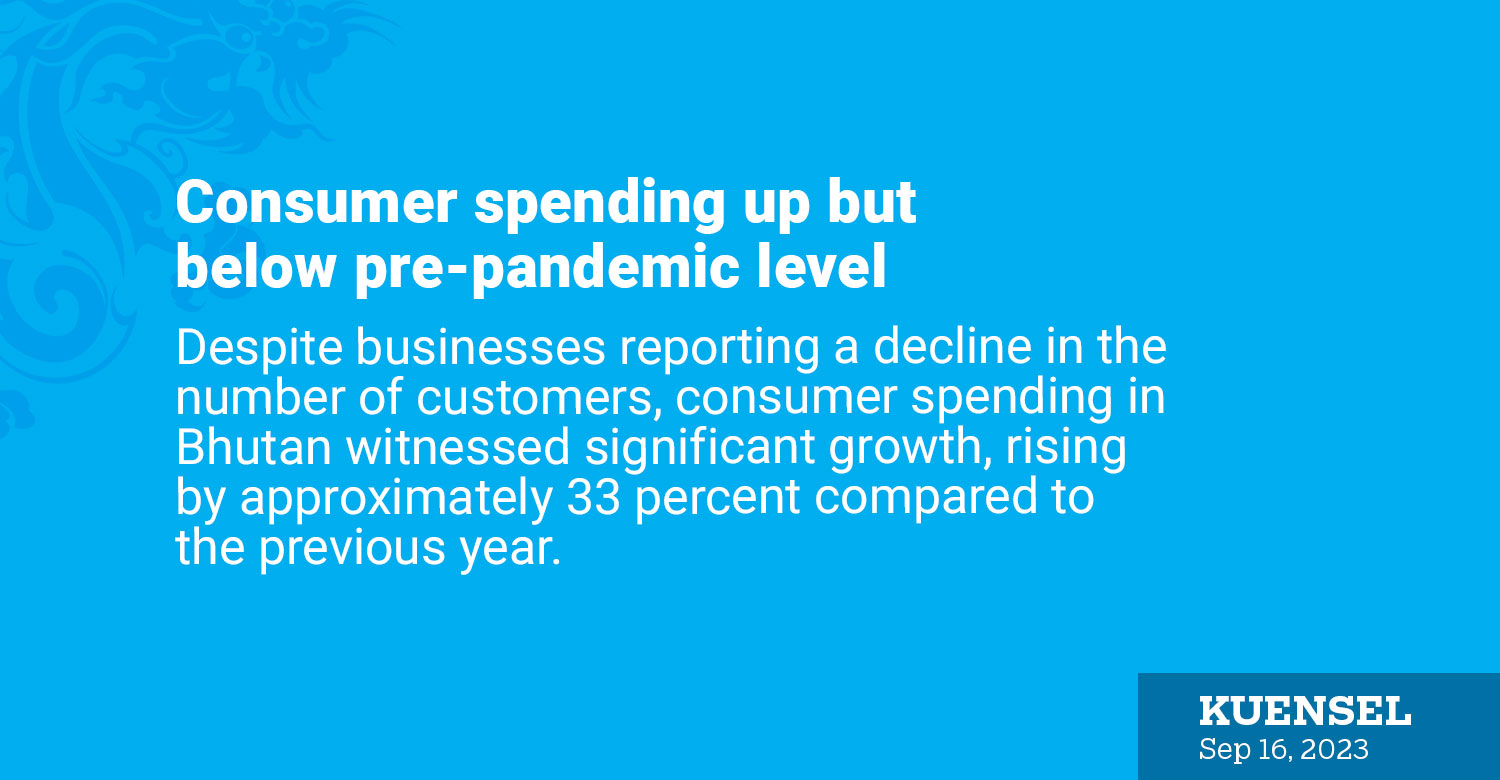
Despite businesses reporting a decline in the number of customers, consumer spending in Bhutan witnessed significant growth, rising by approximately 33 percent compared to the previous year.
This surge in consumer spending is a positive indicator as it plays a crucial role in driving the economy forward, although it has not yet reached pre-pandemic level.
According to government estimates, consumer spending, measured as private final consumption expenditure (which encompasses all expenditures by households and other private entities) at current prices, amounted to Nu 131.12 billion, equivalent to 57.55 percent of the gross domestic product (GDP) last year.
This represented an increase of 5.43 percentage points from the previous year.
However, it’s important to note that prior to the pandemic, in 2019, private final consumption expenditure was estimated at Nu 101.09 billion, constituting 60.09 percent of GDP.
While consumer spending is on the rise, it has not yet reached the levels observed before the pandemic.
Private household final consumption expenditures encompass essential purchases made by households for daily needs, including food, clothing, vehicles, rent, and personal services.
When examining consumer spending at current prices, it provides insights into the total amount of money people are spending. However, it does not consider the impact of inflation, potentially giving the impression that consumer spending is growing when it may be a result of rising prices.
In contrast, consumer spending at constant prices offers a more accurate measure of the volume or quantity of goods and services consumed, as it adjusts for changes in the price level.
Looking at private final household consumption at constant prices (adjusted for inflation), it amounted to Nu 90.22 billion last year, compared to Nu 85.47 billion the previous year, marking an increase of Nu 4.75 billion.
In December 2022, the price of consumer goods and services rose by 4.44 percent compared to the same month the previous year.
This resulted in Bhutanese spending more to purchase the same amount of goods due to the decrease in the purchasing power of the Ngultrum. Specifically, Nu 100 in December last year was worth only Nu 62 compared to December 2021 prices.
The increase in spending was primarily attributed to higher consumer expenditures on food and non-alcoholic beverages, accounting for 40.7 percent of spending. At constant prices, this amounted to Nu 33.13 billion, up from Nu 31.19 billion the previous year, reflecting a rise of Nu 1.9 billion.
Additionally, costs related to housing, water, electricity, gas, and other fuels increased by Nu 578.76 million to Nu 11.57 billion during the same period.
However, spending on transportation costs, which constituted 8.09 percent of spending, decreased by Nu 128 million to Nu 7.3 billion last year. Spending on leisure, culture, eateries, and lodging services saw a slight increase of Nu 189.03 million, totaling Nu 2.95 billion.
Expenditure on clothing and footwear (5.7 percent) also slightly increased by Nu 109.7 million to Nu 5 billion, while communication (4.91 percent) saw a rise of Nu 714.27 million to Nu 6.53 billion.
Spending on alcoholic beverages, tobacco, and narcotics increased to Nu 2.77 billion from Nu 2.53 billion the previous year.
Observers suggest that one of the major factors contributing to the decline in consumer numbers is inflation and the proliferation of business establishments relative to the country’s population.
According to the Competition and Consumer Affairs Authority, there were an average of 26.53 grocery or general shops per thousand population, 17.47 restaurants, 1.27 automobile workshops, and 1.55 garment shops per 1,000 population, indicating a high number of business establishments compared to the population.












